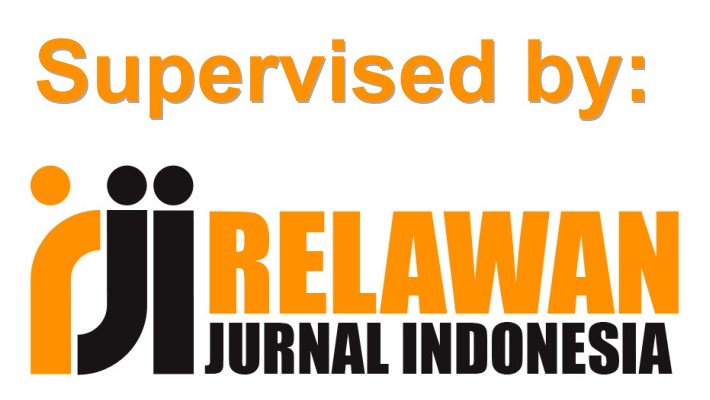Pelatihan Bahasa Arab Dasar Menggunakan Metode Tat’biq Pada Mahasiswa PAI Universitas Negeri Padang
DOI:
https://doi.org/10.31100/matappa.v7i1.3381Keywords:
Training, Arabic Langguage, Tat’biq MethodAbstract
References
Afni, Z., & Sari, F. M. (2021). Pemulihan Ekonomi Melalui Pembangunan Kebun Bibit Desa Menggunakan Metode Participatory Action Research ( PAR ). DINAMISIA: Jurnal Pengabdian Kepada Masyarakat, 5(2), 356–364.
Arkadiantika, I. … Dariyadi, M. W. W. (2019). Memahami Konsep Dasar Pembelajaran Bahasa Arab. In Journal of Chemical Information and Modeling (Vol. 3, Issue 1). http://journal.unj.ac.id/unj/index.php/jtp/article/view/6709%0Ahttp://karya-ilmiah.um.ac.id/index.php/sastra-arab/article/view/39394%0Ahttp://infestasi.trunojoyo.ac.id/simantec/article/view/3809%0Ahttp://lpm.iain-jember.ac.id/download/file/DISKUSI_PERIODI
Drozd, D. S. (2010). Pembelajaran Muhadatsah di Pondok Pesantren Al-Kamal Kuwarasan Kebumen (Tinjauan Metode) (Issue December). Universitas Islam Negeri Sunan Kalijaga Yogyakarta.
Furoidah, A. (2020). Media Pembelajaran Dan Peran Pentingnya Dalam Pengajaran Dan Pembelajaran Bahasa Arab. Al-Fusha : Arabic Language Education Journal, 2(2), 63–77. https://doi.org/10.36835/alfusha.v2i2.358
Hasyim, M. (2015). Andragogi Dalam Pembelajaran Bahasa Arab. ARABIYAT : Jurnal Pendidikan Bahasa Arab Dan Kebahasaaraban, 2(1), 31–42. https://doi.org/10.15408/a.v2i1.1512
Rohhani, I., & Istikomah, I. (2021). Implementasi Perencanaan Pembelajaran Di Kursus Bahasa Arab Al-Iman Surabaya. Idaarah: Jurnal Manajemen Pendidikan, 5(2), 266. https://doi.org/10.24252/idaarah.v5i2.20884
Sangid, A., & Muhib, M. (2019). Strategi Pembelajaran Bahasa Arab. El-Tsaqafah : Jurnal Jurusan PBA, 2(1), 1–22.
Supriatna, A., & Nurhaolah, N. (2023). Upaya Kemampuan Peningkatan Pembelajaran Kitab Jurumiyah Dengan Metode Active Learning Di Pesantren Al Muslih Telukjambe Timur Karawang. Jurnal Primary Edu (JPE), 1(2), 170–183.
Downloads
Published
Issue
Section
Citation Check
License
Copyright (c) 2024 Tegu Reski Amanah

This work is licensed under a Creative Commons Attribution 4.0 International License.
Jurnal ini memberikan akses terbuka langsung dengan prinsip bahwa membuat penelitian tersedia secara bebas untuk publik mendukung pertukaran pengetahuan global yang lebih besar.
Semua artikel yang diterbitkan dapat di Akses secara Terbuka atau Gratis untuk semua orang baik untuk dibaca maupun diunduh di bawah lisensi CC-BY.
Ppenulis mempertahankan kepemilikan hak cipta untuk artikel mereka, tetapi penulis memberikan izin kepada orang lain untuk menggunakan konten publikasi di Matappa secara keseluruhan atau sebagian asalkan karya aslinya dikutip dengan benar.
Hak cipta mencakup hak eksklusif untuk mereproduksi dan menyampaikan artikel dalam semua bentuk dan media, termasuk cetak ulang, foto, mikrofilm dan reproduksi serupa lainnya, serta terjemahan. Reproduksi bagian manapun dari jurnal ini, penyimpanannya dalam basis data dan transmisi dengan bentuk atau media apa pun, seperti elektronik, salinan elektrostatik dan mekanik, fotokopi, rekaman, media magnetik.

MATAPPA is licensed under a Creative Commons Attribution 4.0 International License.









